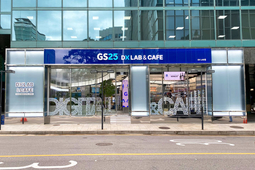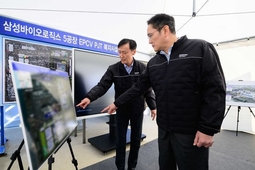
[News Space=Reporter seungwon lee] CURECA™, a global molecular diagnostics total solutions company, recently released a video at the European Society for Clinical Microbiology and Infection Disease (ESCMID Global 2025, hereinafter referred to as ESCMID), and is receiving rave reviews.
Seegene announced on the 23rd that “visitors to the Seegene booth at ESCMID, recently held in Vienna, Austria, unanimously praised CURECA™.”
After watching the recently released CURECA™ video, ESCMID participants expressed their anticipation for its future launch, along with favorable reviews of the innovative concept of a truly fully automated PCR testing system. Seegene reported that the number of sessions introducing CURECA™ during the event was increased by two from the original plan, to a total of 13 sessions, and that they were successfully completed.
It was reported that approximately 2,300 people, including VIP customers from European countries such as Italy, Spain, Germany, and France, as well as from North America such as Canada, as well as general participants and industry officials, visited the Seegene booth and watched the CURECA™ video. An academic official who attended the conference said, “It seems that the Seegene booth was by far the most crowded due to interest in CURECA™,” conveying the on-site atmosphere.
CURECA™, which Seegene is accelerating development with the goal of releasing in July, is a system that automates PCR testing. In particular, it is garnering attention because it automates all processes of PCR testing after loading specimens, including preprocessing automation that does not discriminate between specimen types such as stool, urine, sputum, and blood.
One visitor said, “I have high expectations for the fact that we can eliminate human error, which has inevitably occurred due to manual work, through unmanned automation, and that inspections can be conducted smoothly without time and manpower constraints.”
Another visitor said, “There are many samples that are difficult to process by hand, so it is truly innovative to process such samples automatically,” adding, “It is a completely new concept compared to existing equipment, so I am looking forward to its release.”
An Italian client representative expressed his expectations, saying, “It will be a perfect combination when combined with our lab’s customized kit,” and “We hope that it will be introduced to small and medium-sized medical facilities as well.” He continued, “We will be visiting the American College of Laboratory Medicine (ADLM) 2025 to be held in Chicago in July to check out the actual equipment, and we also plan to explore future collaborations.”
The front part of CURECA™ is the Customizable Pre-treatment System (CPS). The CPS loads the primary tubes coming into the laboratory and pre-treats the samples in the tubes.
CPS is designed to preprocess samples used in immunology diagnosis, biochemical diagnosis, etc. in addition to molecular diagnosis such as PCR. A Seegene official said, “Because it is a modular stand-alone device, it can also be applied as a preprocessing device in other diagnostic fields, so it will have all-round utility value.”
Many foreigners who visited the site said that they were able to experience the possibility of unmanned testing labs that require complex testing processes, and in particular, they all agreed that the CPS, which will implement automated specimen preprocessing, raises expectations that a new chapter in in vitro diagnosis will open by solving problems that previously occurred due to manual work by experts through automation.
“CURECA™ will include software that will allow us to design experimental processes to meet the schedules that require specimen reports, which is expected to improve turnaround time (TAT),” said the head of a microbiology laboratory in Spain. “In particular, since STI (sexually transmitted infection) specimens require repeated opening and closing of multiple tubes, which causes considerable fatigue, CPS’s daily work routine will be dramatically improved.”
After the preprocessing process, the specimens undergo the PCR process, which performs nucleic acid extraction, gene amplification, and result analysis. For specimens that do not require a preprocessing process, the Primary Sample Aliquot System (PAS) can be used instead of the CPS. The PAS loads and dispenses specimens that do not require preprocessing. Seegene combined the PAS and PCR processes and named them CEFA (Customizable & Expandable Full Automation, Sefa).
Seegene plans to make the most of CURECA™’s modular advantages. The company said, “CURECA™ will be used as a complete system, or by combining or separating CPS, PAS, and CEFA to perform various functions.”
Another advantage of modularity is that it allows for a variety of combinations, minimizing the constraints of a given space. Seegene explains this as an optimization of the workflow.
Participants said, “The ability to build a system tailored to the laboratory environment is a novel approach that we have never seen before and is very appealing,” adding, “We expect that a workflow that can secure high-quality results while minimizing the use of existing space and personnel will become a reality.”
“Through this video release and presentation, we were able to see the enthusiastic response from viewers around the world,” said CJ ENM CEO Jong-Yoon Cheon. “We are confident that CURECA™ will lead a major change in the global PCR diagnostic market.”
























































